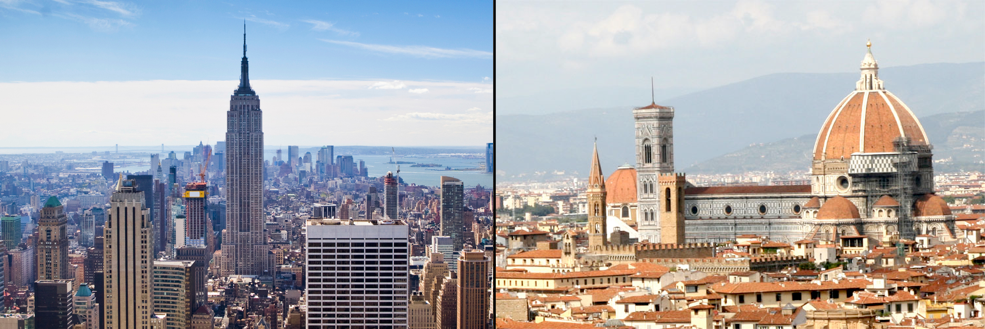Serendip is an independent site partnering with faculty at multiple colleges and universities around the world. Happy exploring!
Small and Large: American and European Cities


I’m a traveler, born ready to explore every city in the world. I’ve been to many countries over the years, visiting many cities. And I’ve noticed that the cities in America are very different from the cities in other places I’ve visited. America is made up of people from different cultures. When people immigrated to America, they came to the cities. I can’t go ten feet in New York without hearing someone speak in a different language, or see a small mom-and-pop diner that guarantees food straight from one homeland or another. At the same time, everywhere I look in Silicon Valley there’s an Indian woman walking in her sari or an Asian mom speaking rapidly to her children in Korean before dropping them off at school. In America, the cities are inherently diverse communities, in terms of nationality as well as culture, values, and language.
The cities in Europe, however, are very different. They were created in a different time, when people mostly stayed where they were born. The people in many European cities are very similar: they look the same, dress the same, speak the same language. They don’t have the same obvious diversity that can be found in American cities. But that doesn’t mean that they aren’t cities. It’s simply a different experience.
When I go to cities in America, it’s to celebrate their diversity. As I move through districts, I move through cultures. I love being able to go from the touristy areas to the more interesting, cultural areas. Because each different cultural area is like a little bubble of authenticity, as Sharon Zukin says “an authentic space and an authentic culture.” Each district is like a miniature city withing the city. It’s a place I love to go because the people in it are comfortable being true to themselves and their values, and that makes it a place that allows me to understand different cultures on a deeper level.
When I go to cities in Europe, it’s to celebrate their culture. The beautiful thing about European cities is that they are essentially the smaller cultural areas in American cities, blown up to the size of an actual city. Going to the Italian area of New York is wonderful, of course, but it is completely different from going to an actual city in Italy. Places like Florence, Sienna, Venice, and Sicily have all had to fuse together in New York, focusing only on the things they have in common. In Italy they can continue their own, smaller traditions in each city.
That’s not to say that one is better or more important than the other. I prefer going to European cities more, but that may be because I love traditions, which can be found much more abundantly in European cities than in American ones. When I visit European cities I get a feeling of oldness, of traditions so deeply rooted in a culture that no one can remember when they started. People still walk slowly in European cities, leftover remnants of older times that don’t exist in America. They speak slowly, they pause, they think.
In American cities, people move fast. They know where they have to be, and when they have to be there. They talk quickly, with the belief that if they say a lot, they’ll eventually get to what they meant to say all along.
American cities and European cities are very different. They have differences in languages, in size, in the number of cultures within walking distance. But they are also very similar. They both have the essential elements of cities: not only large numbers of people, but also cultures and traditions deeply important to everyday life. And while I may not be able to travel to every city in the world, I am able to strongly appreciate the importance of cities: in creating and sharing traditions, and in bringing people together through their love of communities, beliefs, and customs.


